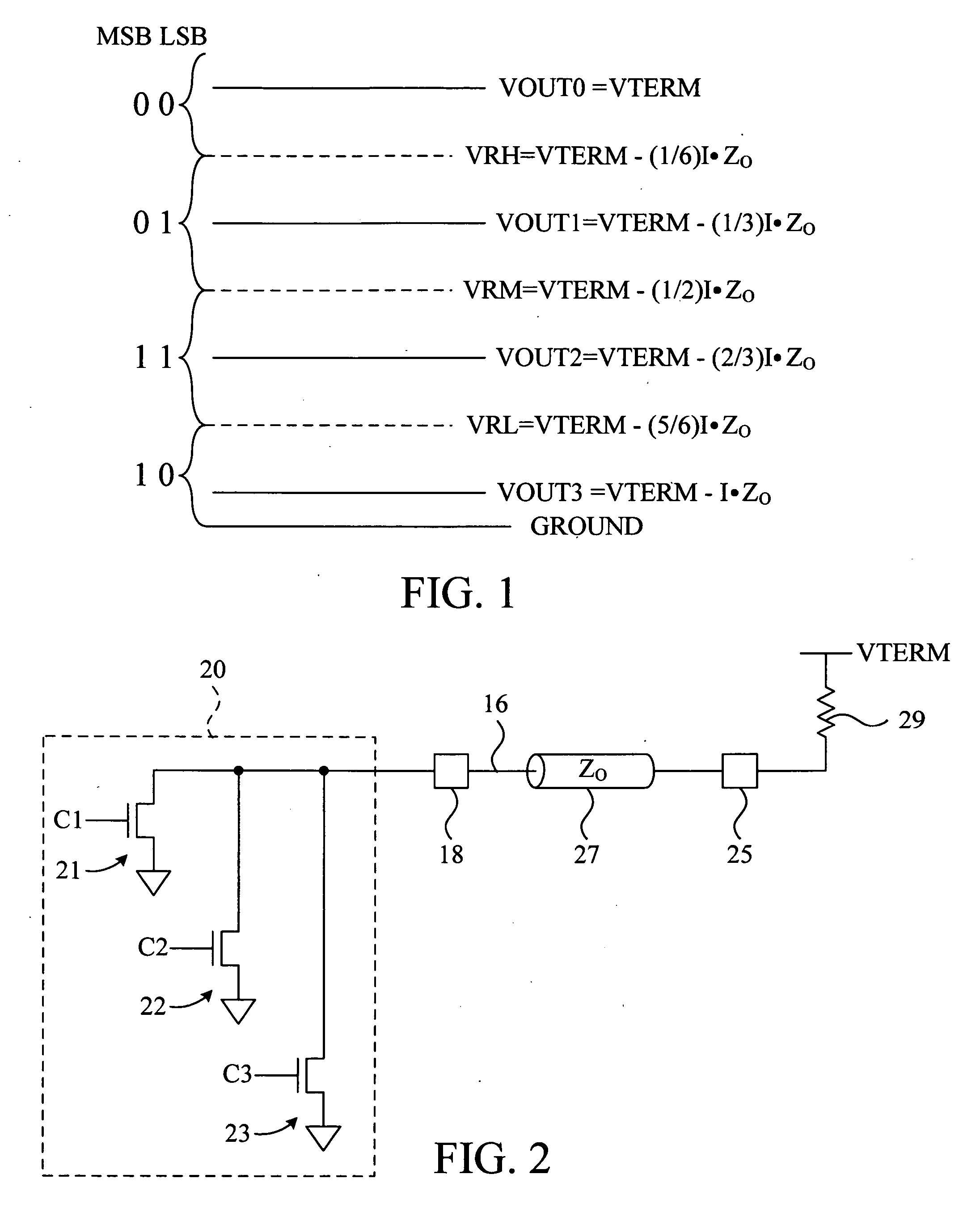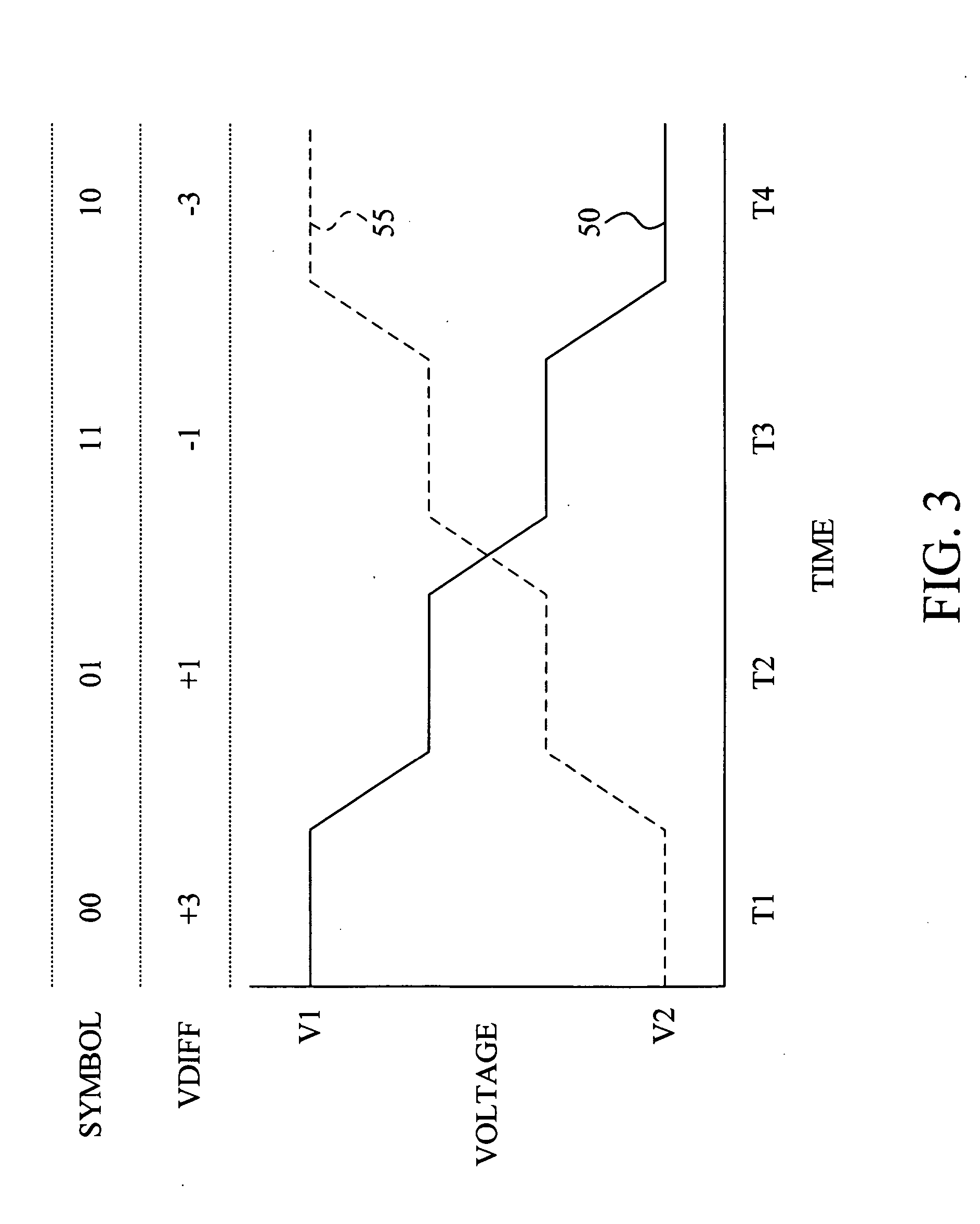Built-in self-testing of multilevel signal interfaces
a multi-level signal and interface technology, applied in the field of multi-level digital signaling, can solve the problems of reducing the ability of receiving devices to distinguish binary signals, dividing signals into smaller levels for multi-pam, and affecting the implementation of multi-pam,
- Summary
- Abstract
- Description
- Claims
- Application Information
AI Technical Summary
Benefits of technology
Problems solved by technology
Method used
Image
Examples
Embodiment Construction
[0023]FIG. 1 shows a multilevel signal system having four logical states corresponding to four distinct voltage levels, VOUT0, VOUT1, VOUT2 and VOUT3. The voltage levels in this example are all positive relative to ground, and range as high as VTERM. VOUT0 is defined to be above VREFH, VOUT1 is defined to be between VREFM and VREFH, VOUT2 is defined to be between VREFL and VREFM, and VOUT3 is defined to be less than VREFL. VOUT0 corresponds to logical state 00, VOUT1 corresponds to logical state 01, VOUT2 corresponds to logical state 11, and VOUT3 corresponds to logical state 10. An example of the 4-PAM system described above has been implemented for a memory system interface having VOUT0=1.80V, VOUT1=1.533V, VOUT2=1.266V and VOUT3=1.00V. Although four logical states are illustrated in this example, a multilevel signal system may have more or less logical states, with at least two reference levels serving as boundaries between the states.
[0024] A first bit of each logical state is ...
PUM
 Login to View More
Login to View More Abstract
Description
Claims
Application Information
 Login to View More
Login to View More - R&D
- Intellectual Property
- Life Sciences
- Materials
- Tech Scout
- Unparalleled Data Quality
- Higher Quality Content
- 60% Fewer Hallucinations
Browse by: Latest US Patents, China's latest patents, Technical Efficacy Thesaurus, Application Domain, Technology Topic, Popular Technical Reports.
© 2025 PatSnap. All rights reserved.Legal|Privacy policy|Modern Slavery Act Transparency Statement|Sitemap|About US| Contact US: help@patsnap.com



